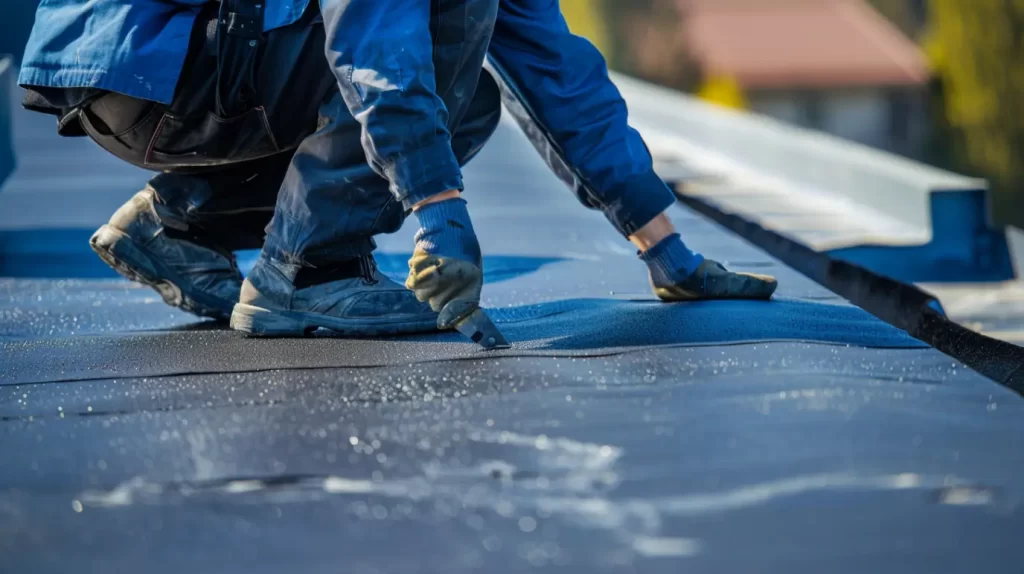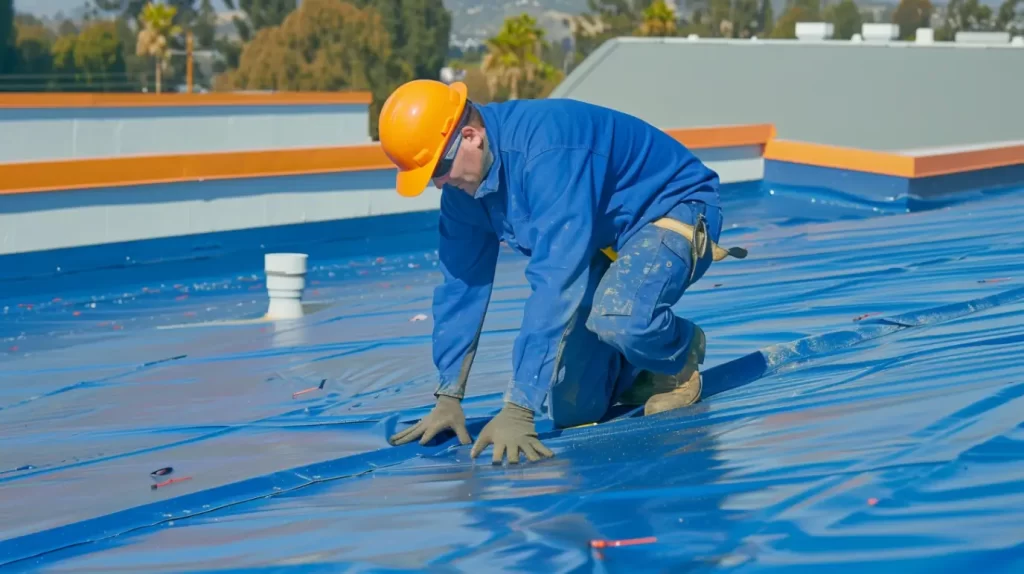Understanding the relationship between roof age and HOA insurance premiums is crucial for homeowners and board members. As roofs age, their susceptibility to weather events and structural issues increases, significantly influencing insurance rates. Insurers assess factors like roofing material and condition. In Orange County, CA, consulting experts such as Fontaine Roofing can offer valuable insights into maintenance that may reduce risks. This knowledge aids in risk assessment and helps manage premium costs. Staying informed promotes better planning and proactive measures for maintaining affordable insurance coverage.
Roof Age and HOA Insurance Premiums
An aging roof can significantly impact HOA insurance premiums due to the risks associated with older roofing systems. Insurers consider factors like structural integrity, roofing materials, and the potential for water damage or storm claims. As roofs age, the chances of maintenance issues or replacement increase, potentially raising insurance costs. Regular inspections and maintenance are essential for securing better coverage and lower premiums.
Contact Us
Why Roof Age Matters
The age of your roof significantly influences insurance companies’ approach to risk assessment and premium determination. Older roofs often present a higher risk of damage due to weather-related events, leading to increased insurance costs. This consideration is crucial when evaluating the actual cash value and replacement cost during claims. Additionally, aging roofs may exhibit structural issues or require more frequent repairs, prompting insurers to adjust coverage offerings, which ultimately impacts homeowners insurance premiums and the overall risk profile of the property.
Risk Factors Associated with Aging Roofs
Aging roofs on HOA properties pose risks that can impact insurance premiums. As roofs deteriorate, the likelihood of structural issues and damage from natural disasters rises, increasing potential claims. Insurers closely assess the roof’s condition for vulnerabilities like leaks or weather susceptibility. Older materials, such as asphalt or wood shingles, are often more prone to failure, leading to higher costs and limited coverage for HOAs. Regular inspections can help mitigate these risks.

Key Factors Insurers Evaluate When Assessing Roof Age
Insurance companies evaluate roof age based on several factors, including roofing material; asphalt shingles typically have shorter lifespans than metal roofs. Inspection reports and maintenance documentation are crucial as they reveal the roof’s condition and upkeep. Regular maintenance records can show a proactive approach, potentially lowering insurance premiums for well-maintained roofs.
Roofing Material and Lifespan Considerations
The type of roofing material significantly influences both lifespan and insurance premiums. Durable materials, such as metal roofs, have longer life expectancies, reducing the frequency of replacement and associated costs. Conversely, asphalt shingles and wood shingles may deteriorate more quickly, increasing the risk of insurance claims due to storm damage or water intrusion. Insurance companies carefully evaluate these factors, as they directly impact the overall condition of your roof and can lead to increased rates for older roofing systems.
Inspection Reports, Documentation, and Proof of Maintenance
Thorough inspection reports play a critical role in determining an HOA’s insurance premiums. Documentation of regular maintenance demonstrates diligence in managing the property and can significantly influence costs. Insurers favor policies backed by proof that roofs have been well-maintained, mitigating the risk of potential damage and liability. This proactive approach not only boosts the condition of your roof but also provides a solid foundation for negotiating lower premiums and enhancing coverage options under your homeowners insurance policy.

When Do Insurance Premiums Increase Due to Roof Age?
Homeowners’ insurance premiums can be influenced by factors like roof age and condition. Premiums often increase when a roof reaches milestones, typically around 20 or 25 years. Maintenance is also crucial in determining rates. Regular assessments by homeowners associations can help evaluate the age and upkeep of roofs. By maintaining their roofs, homeowners may lower their premiums and prevent costly damage, benefiting both themselves and insurance companies.
Age Milestones That Trigger Rate Changes
Significant milestones in roof age can lead to notable changes in insurance premiums. Generally, roofs aged ten, fifteen, and twenty years mark critical points for insurance companies, often resulting in higher premiums due to increased risk. As a roof deteriorates, the potential for water damage and structural issues escalates, prompting insurers to reassess coverage options. Understanding these pivotal age markers allows HOAs to proactively manage their insurance policies and make informed decisions regarding roof maintenance or replacement for optimal coverage and protection.
How Insurers Prioritize Roof Condition Over Age
The overall condition of a roof plays a pivotal role in determining insurance premiums, often superseding the mere age of the roofing material. A well-maintained roof exhibiting good condition may lead to lower premiums, as insurers assess the risk of potential claims. Conversely, an aging roof suffering from structural issues or damage significantly heightens the risk, resulting in higher rates. Regular inspections and proactive maintenance not only preserve the roof’s integrity but also ensure insurance coverage remains optimal and reliable.

Strategies HOAs Can Use to Limit Insurance Premium Increases
Implementing proactive roof replacement strategies and adhering to a routine maintenance schedule can significantly mitigate insurance premium increases for HOAs. Regular inspections of the roof’s condition and timely repairs can enhance the durability of roofing materials, reducing the risk of issues that lead to higher premiums. Additionally, selecting high-quality, resilient roofing options, such as metal or concrete shingles, can further decrease long-term insurance costs while ensuring compliance with local building codes. This comprehensive approach fosters peace of mind while maintaining optimal insurance coverage.
Proactive Roof Replacement and Regular Maintenance
Implementing proactive roof replacement and regular maintenance significantly reduces the risk of costly damage, thereby offering peace of mind to homeowners associations. Consistent inspections can identify early signs of deterioration, minimizing the potential for water damage and other structural issues. By addressing concerns promptly, property managers can uphold the condition of the roof, which subsequently supports lower insurance premiums. Not only does this approach preserve property value, but it also enhances the overall financial stability of the HOA while ensuring compliance with local building codes.
Choosing Optimal Roofing Materials for Longevity and Lower Risk
Selecting the right roofing materials plays a critical role in ensuring longevity and minimizing risk for HOA properties. Durable materials such as metal roofs or concrete shingles, particularly those from trusted brands like GAF and CertainTeed, are noted for their resilience against natural disasters, potentially lowering insurance premiums due to reduced likelihood of storm damage. Additionally, Polyglass offers innovative solutions that can further enhance the durability of roofing systems. Investing in high-quality roofing not only enhances the home’s market value but also provides peace of mind.
In Summary
The intricate relationship between roof age and HOA insurance premiums underscores the importance of proactive management in property maintenance. Companies like Fontaine Roofing, a GAF Master Elite Contractor and Certainteed Shingle Master, emphasize the value of regular inspections and timely repairs. As a Polyglass Preferred Contractor and TRI certified firm, our team ensures the use of durable materials, enhancing property value and homeowner peace of mind. By prioritizing roof condition, we help secure optimal insurance coverage and reduce the likelihood of higher premiums in the future.
Read our blog: How to Create a Multi-Year Roofing Plan for a Community
Frequently Asked Questions
Are HOAs overlooking key factors in roof age and insurance planning?
HOAs should avoid neglecting regular roof inspections and maintenance, as well as failing to document roof repairs. Additionally, overlooking the impact of roofing materials on longevity can lead to higher insurance premiums. Being proactive in addressing these issues is crucial for cost management.
Does the age of the roof affect homeowners insurance?
Yes, the age of the roof significantly impacts homeowners insurance. Insurers consider older roofs as higher risk, potentially leading to increased premiums or even coverage denial. Regular maintenance and timely replacements can mitigate these effects, ensuring better insurance terms for homeowners.

